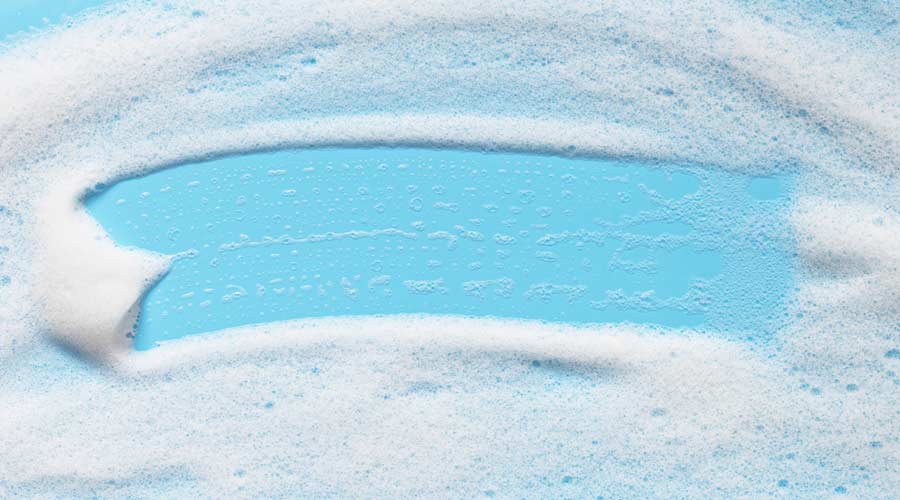
A cold wind howls and a freezing rain lays a slick layer of thin, nearly invisible ice across the entire parking lot and sidewalk. It creates an obstacle for anyone trying to make their way from the warm comfort of their car to the inviting, well-lit foyer of the facility they've come to visit. End user customers have few options available to combat this dangerous nuisance — but principal among them? The spreading of ice melt on areas likely to be well-trodden by visitors.
Ice melt is a well-known commodity at this point. At its core, ice melt is a relatively simple product — the combination of salt with various chemicals and additives that are tailored to specific ice melt needs. For years, people have thrown all sorts of substances and compounds at the frozen surfaces that visitors rely on to move around in inclement weather, but eventually, it always comes down to varying degrees of salt content.
David Orr, PE, PhD, director and senior engineer for the Cornell Local Roads Program at Cornell University in Ithica, New York, keeps it simple when it comes to solving this seemingly impenetrable riddle: "It's all salt," he says. But it’s important to remember that salt can be harsh. When broadcast, it works its way into porous surfaces — parking lots, sidewalks, interstates, local roads, highways, and more. It can be rough, dangerous and potentially harmful to everything from footwear, to tires and pet paws.
However, the idea that "it's all salt" may be a bit too simple to really help customers understand what makes for an effective ice melt product. In fact, chemistry has come a long way over the years. More specifically, one might wonder, what varieties of salt solutions can be thrown at ice, slush and sleet?
Mixing it Up
Standard Rock Salt (Sodium Chloride): Most industry experts are familiar with the basic chunky look and feel of standard rock salt. It's tried and true and works in most scenarios. However, if the weather turns harsh, conditions might arise where more formulated options are needed. Also, if used incorrectly or in excess, customers might find themselves with a mess — ghostly white residue that sits on surfaces for days, or runoff into nearby water sources and landscaping features.
It doesn’t take much for salt to take a noticeable toll on the immediate surroundings. The effect on local groundwater is a real concern, and worth noting to customers when recommending where and how much product to use.
“It only takes one teaspoon of salt to permanently contaminate five gallons of water,” says Brayden Ward, unit director for SSC Services for Education and University of Wisconsin-Superior.
Calcium Chloride: Effective to roughly -25 degrees Fahrenheit, this substance sets the standard for the industry. It is offered in a variety of formats (pellets, powders, etc.), but might require some extra sales effort because supply chain issues can make it difficult to obtain. The good news is, it works well in small quantities, so if it can be obtained, it's a good "bang for your buck" approach for end user customers.
Magnesium Chloride: This mostly comes in pellet or flake form, but doesn’t pack as much pure ice melt punch as other compounds. It's more environmentally friendly, though — less harsh in raw form on landscaping features. Sales strategies should include that it works just as well as other, stronger ice melts when freshly applied, but it can easily become diluted and lose effectiveness in harsh environments, or as water starts to carry the product away.
Acetates: There are a couple of different types of acetates for salespeople to be aware of. Calcium magnesium acetate (CMA) is used by municipalities to treat highways and freeways. It is usually spread over already formed ice layers, and while it doesn't directly melt the layers that have already accumulated, it prevents further buildup and slowly starts to transform ice into slush as traction (and thus, heat) is applied. The smell deters animals, and it's generally considered safer for the environment, and particularly less likely to cause long-lasting damage to roads, sidewalks and surfaces.
Sodium acetate is similar, but typically seen at airports, used as a runway deicer. It works down to zero degrees Fahrenheit and actively gives off heat as it dissolves.
Potassium Chloride/Urea: These work well down to 12 to 15 degrees and are safer option for end users to apply around vegetation than most of the other ice melt approaches. Accordingly, these are both ingredients in fertilizers used in agricultural practices, but that doesn't mean that it's necessarily safe for consumption. In the case of runoff, it mainly requires farmers and crop cultivators to watch the balancing levels of soils to ensure that the salt content doesn't get too high.
In addition to the varieties mentioned, glycols are sometimes applied in situations where ice melt is needed.
Ethylene glycol is used as an airplane deicer and can drastically reduce the freezing point of water to well below -50 degrees Fahrenheit, but it's also poisonous to humans and animals and should be avoided.
Propylene glycol is much safer for humans and animals. It's also extremely useful in helping to build traction on ice-covered surfaces. Because it comes in a liquid form, it's commonly mixed with something granular to help it stick and remain on a variety of surfaces.
How Much Ice Melt Should You Apply?

 Celebrating BSCAI's 60th Anniversary eBook
Celebrating BSCAI's 60th Anniversary eBook The Down and Dirty on Cleaning in Virus Season
The Down and Dirty on Cleaning in Virus Season How Surfactant Use is Expanding in Commercial Cleaning
How Surfactant Use is Expanding in Commercial Cleaning